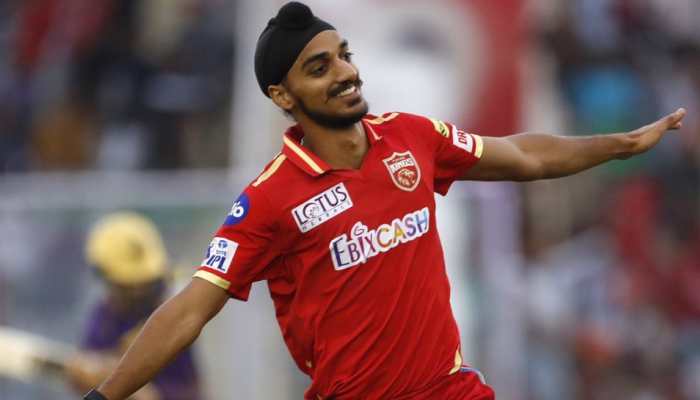The Festival
The ancient festival of lights, Diwali is celebrated across India and world with fervour and exuberance.
Trending Photos
)
The ancient festival of lights, Diwali is celebrated across India and world with fervour and exuberance. According to Hindu mythology, darkness signifies ignorance and evil while light represents knowledge and victory. Therefore, lighting lamps on Diwali symbolises destruction of ignorance and evil through light. Diwali is associated with fun, sparkle, glitter, gifts, delicacies and inspires endless zest for living.
Diwali is a spectacular festival held in late autumn. The celebration takes place on the new moon day (Amavasya), at the beginning of Kartika (October-November), eighteen days after the celebration of Dussehra. On this day, rows of lamps decorate the houses and presents are exchanged. Diwali celebration lasts for five days.
Choti Diwali
Choti Diwali or Narak Chaturdasi is celebrated a day before Diwali, but in a smaller scale. The rangolis are created in front of the courtyard and doorway. Tiny footprints made of rice paste are specially drawn symbolising little feet of Goddess Lakshmi entering the house.
Legend has it that the demon king Narakasur after defeating Lord Indra had snatched away the magnificent earrings of Aditi, the Mother Goddess and imprisoned sixteen thousand daughters of the Gods and saints in his harem.
When Satyabhama (Lord Krishna’s spouse) came to know about this, she was enraged by Narakasura`s malevolence towards women, and she appealed to Krishna to let her destroy Narakasura. Narakasura was given a curse that a woman would kill him. Krishna granted Satyabhama a boon to fight with Narakasura. With Krishna as the charioteer, Satyabhama entered the battlefield. During the war, Krishna swooned for a while, a preordained divinely act adopted to empower Satyabhama to kill the demon. After Narakasura was beheaded, the imprisoned women were released, and Krishna accepted to marry them all.
It is interesting to note that Bhudevi, mother of the slain Narakasura, declared that his death should not be a day of mourning but an occasion to celebrate and rejoice. Since then, Deepavali is being celebrated every year with lot of fun, frolic and fireworks.
In South India, the victory of the divine over the mundane is celebrated in a very peculiar way. People wake up before sunrise prepare a paste by mixing Kumkum or vermillion in oil, symbolizing blood and after breaking a bitter fruit that represents the head of the demon King that was smashed by Krishna, apply that mixture on their foreheads. Then they have an oil bath using sandalwood paste.
In Maharashtra also, traditional early baths with oil and ‘Uptan’ (paste) of gram flour and fragrant powders are a `must`. All through the ritual of baths, deafening sounds of crackers and fireworks are there in order that the children enjoy bathing. Afterward steamed vermicelli with milk and sugar or puffed rice with curd is served.
Govardhan Puja
Govardhan Puja is celebrated on fourth day of the Diwali festivity. The puja is performed predominantly in the northern states of Haryana, Uttar Pradesh, Punjab and Bihar.
The legend goes by that the people of Gokul near Mathura used to celebrate a festival in honour of Lord Indra and worshiped him after the end of every monsoon season. But one particular year the young Krishna stopped them from offering prayers to the vain Lord Indra who in terrific anger sent a deluge to submerge Gokul.
People were afraid that the downpour was a result of their neglect of Indra. But Krishna assured them that no harm would befall them. He lifted Mount Govardhan with his little finger and sheltered men and beasts from the rain. This gave him the epithet Govardhandhari. After this, Indra accepted the supremacy of Krishna. Since then, the practice of performing puja by building and worshipping hillocks made of cowdung and decorated with flowers has been followed to mark this day.
This day is also observed as ‘Annakoot’ -- meaning mountain of food. Fifty-six different kinds of food are offered as prasad to Lord Govardhan and later served to devotees.
In temples, especially in Mathura and Nathadwara, the deities are given bath with milk, attired in shining clothes and sparkling jewellery. Thereafter, the deities are worshipped and served with innumerable sweets.
In many Hindu homes it is a custom for the wife to put the red ‘Tilak’ on the forehead of her husband, garland him and perform an ‘Aarti’ to pray for his long life. The husband reciprocates with a costly gift or ‘Gudi Padwa’ as a symbol of love and devotion.
On this day, newly married daughters and husbands are invited for special meals and given presents.
Stay informed on all the latest news, real-time breaking news updates, and follow all the important headlines in india news and world News on Zee News.
Advertisement
Live Tv
Advertisement







)
)
)
)
)
)
)
)
)
)
